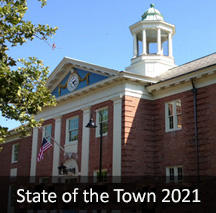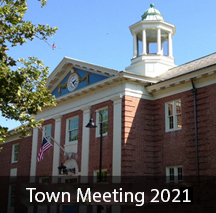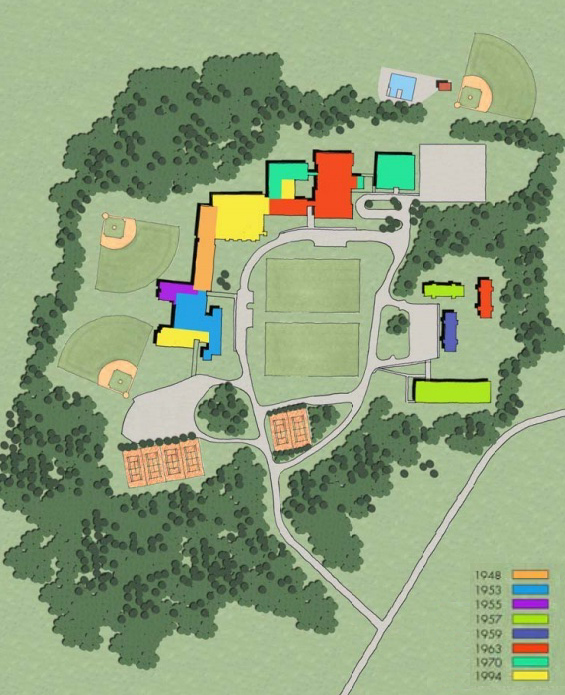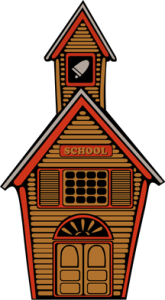 Since large in-person gatherings are still not feasible due to the pandemic, the town will again hold the annual State of the Town meeting via Zoom. A preliminary schedule discussed by the Select Board on September 27 calls for three sessions, each starting at 7 p.m., with updates on topics assigned as follows (though the schedule may be compressed into two nights and topic moved around):
Since large in-person gatherings are still not feasible due to the pandemic, the town will again hold the annual State of the Town meeting via Zoom. A preliminary schedule discussed by the Select Board on September 27 calls for three sessions, each starting at 7 p.m., with updates on topics assigned as follows (though the schedule may be compressed into two nights and topic moved around):
November 1:
- The public health situation
- Finance Committee
- School building project
- Special Town Meeting warrant articles
November 2:
- Inclusion, Diversity, Equity and Antiracism Initiative (IDEA)
- Climate Action Planning Committee
November 3:
- South Lincoln planning
- Community center
The final schedule is subject to feedback from various town committees on how much time they need for presentations and possible breakout discussions or snap polls on certain items.
Officials will use the State of the Town to gauge interest in a community center, which was promised after the school project was finished in 2022. The discussion will include a review of the needs for a center (primarily for the Council on Aging & Human Services and the Parks and Recreation Department), possible designs, and the expected site on the Hartwell campus. They’ll also look at any other big-ticket needs on the horizon and the town’s projected borrowing capacity.
In 2018, the Community Center Planning and Preliminary Design Committee (CCPPDC) submitted its final report outlining two possible design directions for the facility, which was then estimated to cost $15.3 million to $16.2 million. Construction costs have escalated significantly since then, so those estimates will have to be updated.
A 2018 survey showed that residents were about evenly split between the two design options. However, one design element that will most likely be reviewed is having more outdoor seating and program areas — something that wasn’t a priority before the Covid-19 pandemic.
If all goes as planned, a Community Center Building Committee will be formed early next year to update the CCPPDC report, schedule public meetings, hire an architect, and produce a schematic design. A Town Meeting funding vote on the project could take place in March or November 2022.
Special Town Meeting
A Special Town Meeting on November 6 will feature three warrant articles asking approval for the following. All three need to be voted on before the Annual Town Meeting in March 2022 for contractual and construction season reasons.
- Using money that wasn’t spent on the recent Hartwell re-roofing project for a new roof on Pod C. The remaining funds are about equal to the cost for that project.
- Prepaying a portion of the cost of the refurbished school’s solar power purchase agreement to create more long-term savings and lower energy costs.
- Additional funds for parapet repairs on the Lincoln Public Library, as construction bids were all higher than the project’s $355,000 budget approved last spring.








